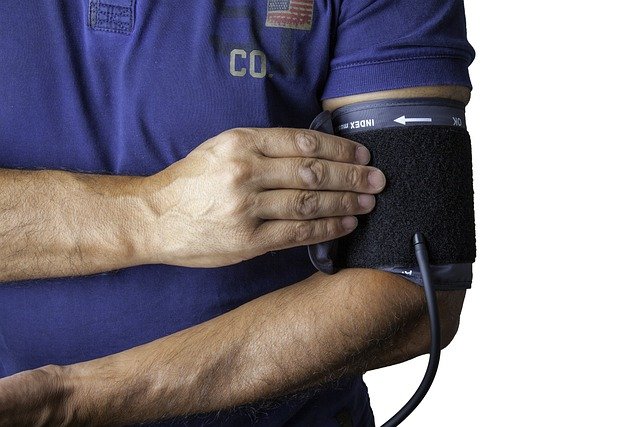Start Medical Assistant Training in the US Today
Start Medical Assistant Training in the US Today and begin learning the core skills used in medical settings. Develop knowledge in patient care clinical procedures and healthcare administration. Training includes practical sessions in environments that reflect real medical practices.

How Do You Learn Skills Used in Medical Clinics?
Medical assistant training programs teach essential clinical skills through structured coursework and practical application. Students learn to take vital signs, prepare examination rooms, assist with medical procedures, and handle basic laboratory tests. Training covers infection control protocols, medical terminology, and anatomy fundamentals. Many programs use simulation labs equipped with modern medical equipment, allowing students to practice procedures in controlled environments before working with actual patients.
The curriculum typically includes modules on electrocardiography (EKG), phlebotomy, medication administration, and injection techniques. Students also learn to operate common medical devices such as blood pressure monitors, pulse oximeters, and autoclave sterilization equipment. This comprehensive approach ensures graduates can confidently perform clinical tasks required in various medical settings.
What Does Practice Patient Care and Documentation Involve?
Patient care training focuses on developing communication skills, empathy, and professionalism essential for healthcare environments. Students learn proper patient interaction techniques, including how to explain procedures, provide comfort during examinations, and maintain patient confidentiality according to HIPAA regulations. Documentation training covers electronic health records (EHR) systems, medical charting, and accurate record-keeping practices.
Training programs emphasize the importance of detailed documentation for continuity of care and legal compliance. Students practice recording patient histories, updating medical records, and managing patient information systems. This component often includes role-playing exercises where students interact with simulated patients, helping them develop bedside manner and professional communication skills necessary for successful patient relationships.
How Do Programs Train in Real Healthcare Environments?
Many accredited medical assistant programs incorporate externships or clinical rotations in actual healthcare facilities. These experiences allow students to apply classroom knowledge in real-world settings under supervision of experienced medical professionals. Students work alongside practicing medical assistants, nurses, and physicians, gaining exposure to daily operations of medical offices, hospitals, or specialty clinics.
External training sites may include family practice offices, pediatric clinics, urgent care centers, or specialty practices such as cardiology or dermatology. This exposure helps students understand different medical specialties and workplace dynamics while building professional networks. Externships typically last several weeks and provide valuable hands-on experience that enhances employment prospects upon graduation.
What Basic Clinical Procedures Do Students Understand?
Medical assistant training covers fundamental clinical procedures commonly performed in outpatient settings. Students learn proper techniques for drawing blood, administering immunizations, and conducting basic diagnostic tests. Training includes wound care, suture removal, and assistance during minor surgical procedures. Students also learn to prepare and maintain sterile fields, handle medical instruments, and follow safety protocols.
Additional clinical procedures covered include vision and hearing screenings, urinalysis, and basic laboratory techniques. Programs teach students to recognize normal versus abnormal results and when to alert healthcare providers about concerning findings. This knowledge base enables medical assistants to serve as valuable team members in clinical decision-making processes while working within their scope of practice.
What Administrative Medical Tasks Are Studied?
Administrative training components prepare students for the business side of healthcare operations. Coursework covers medical billing and coding basics, insurance verification, appointment scheduling, and patient registration processes. Students learn to manage medical records, handle correspondence, and coordinate referrals between healthcare providers.
Training includes practice with medical office software, telephone etiquette, and customer service principles specific to healthcare environments. Students also study healthcare regulations, compliance requirements, and quality assurance procedures. This administrative knowledge enables medical assistants to support practice management while ensuring efficient patient flow and accurate documentation.
| Program Type | Provider Examples | Duration | Cost Estimation |
|---|---|---|---|
| Certificate Programs | Community Colleges, Vocational Schools | 6-12 months | $3,000-$8,000 |
| Diploma Programs | Career Institutes, Technical Schools | 9-24 months | $10,000-$15,000 |
| Associate Degree | Community Colleges | 18-24 months | $8,000-$12,000 |
| Online Programs | Penn Foster, Purdue Global | 6-18 months | $4,000-$10,000 |
Prices, rates, or cost estimates mentioned in this article are based on the latest available information but may change over time. Independent research is advised before making financial decisions.
Career Outlook and Opportunities
Medical assistant careers offer stable employment with opportunities for advancement in various healthcare settings. The Bureau of Labor Statistics projects continued growth in this field, driven by an aging population and expanding healthcare services. Graduates can pursue specialization in areas such as podiatry, ophthalmology, or cardiology, often requiring additional training but offering higher earning potential.
Professional certification through organizations like the American Association of Medical Assistants (AAMA) or National Healthcare Association (NHA) can enhance employment prospects and salary potential. Many employers prefer certified medical assistants, and certification demonstrates commitment to professional standards and continuing education.
Medical assistant training provides a solid foundation for entry into healthcare while offering pathways for career advancement. Whether pursuing immediate employment or planning further healthcare education, these programs deliver essential skills and knowledge needed for success in modern medical environments. The combination of clinical competency and administrative expertise makes medical assistants valuable healthcare team members across diverse practice settings.
This article is for informational purposes only and should not be considered medical advice. Please consult a qualified healthcare professional for personalized guidance and treatment.




